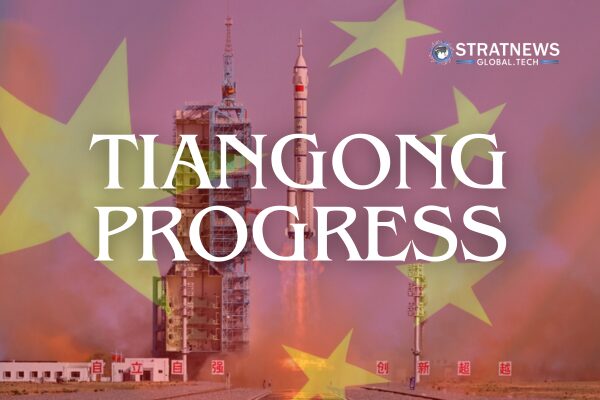Shenzhou-20 Crew Advances Science and Technology Work Aboard Tiangong Space Station
The Shenzhou-20 crew aboard China’s Tiangong space station has completed a wide range of tasks over the past week, according to the China Manned Space Agency (CMSA). Their activities included unpacking new extravehicular spacesuits, progressing multiple scientific experiments, and conducting important technical tests.
Upgraded Extravehicular Suits and Maintenance Work
Astronauts Chen Dong, Chen Zhongrui, and Wang Jie entered Tiangong on 25 April this year. Last week, they unpacked two new extravehicular spacesuits — designated D and E — delivered by the Tianzhou-9 cargo craft. The crew carried out performance checks and maintenance work on the suits.
The upgraded design extends their operational lifespan from 15 spacewalks over three years to 20 spacewalks over four years, significantly improving their utility for future missions.
Advancements in Space Science and Biotechnology
In the field of space life sciences, the crew used organ-on-a-chip technology to examine how space conditions affect the blood-brain barrier and brain function at cellular, tissue, and organ levels. This research aims to better predict health risks for astronauts and develop effective countermeasures for long-duration missions.
They also conducted medical experiments, including studying bone metabolism, microbiota, and nutritional metabolism. Commander Chen Dong employed Raman spectroscopy to analyse urinary metabolic components, supplying critical data for refining space health monitoring systems.
The crew collected throat swabs to research how respiratory microorganisms influence the respiratory system in space.
Testing New Technology and Space Applications
The astronauts carried out microbial control experiments by comparing bacterial levels in a module before and after disinfection, helping evaluate cleaning effectiveness in the station’s environment.
They also installed equipment for a material-energy conversion and regeneration system. This project will assess the performance of microbial fuel cells in purifying wastewater and recovering energy in space, comparing results with ground-based experiments.
In microgravity physical science, the crew completed combustion experiments, including replacing a burner inside the experimental module.
The team trialled an on-orbit mixed reality (MR) training device, wearing portable MR glasses and controlling the system using voice and gesture commands. They also installed and tested a -80°C space refrigerator in the Wentian lab module and replaced the sleeping compartment door in the core module.
Health Monitoring and Physical Training
Routine health monitoring continued, with checks on bone density, muscle volume, strength, and hearing. The astronauts also maintained a structured exercise routine to counteract the effects of weightlessness during their mission.
with inputs from Reuters


